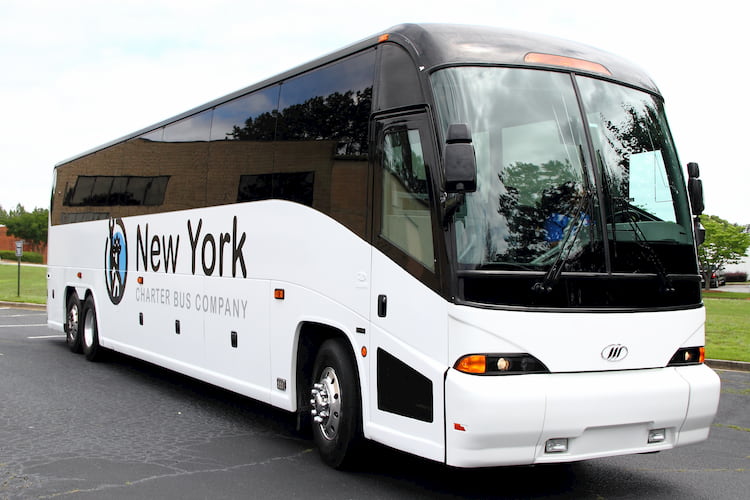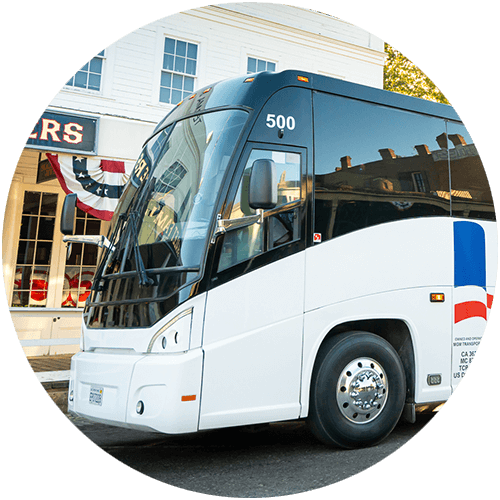20 Excellent Tips For Deciding On Event Shuttle Websites
20 Excellent Tips For Deciding On Event Shuttle Websites
Blog Article
Top 10 Tips For The Capacity And Vehicle Selection Of Shuttle Services For Employees
Here are 10 great suggestions on capacity and the best vehicle to help employees with shuttle transportation:
1. Determine Employee Transportation Needs
In the beginning, conduct a thorough analysis of your employees to determine how many of them are using the shuttle regularly. Take into consideration factors like the amount of employees, their work schedules and the peak hours. This will assist you in selecting the right vehicle capacity, and ensure your shuttles are able to handle a wide range of passengers.
2. Choose the best vehicle for you.
Depending on the volume of employees and their specific needs, pick the vehicle that will best meet your needs for shuttle services. There are minibuses available, along with vans or larger buses. Minibuses are great for smaller groups because they can be tucked away in tighter places, while large buses are ideal for large groups. Look over the layout to see whether it provides comfortable seating, as well as enough space to store luggage.
3. Evaluate Fuel Efficiency
Costs for fuel have a huge influence on the budget of shuttle services. Prioritise fuel-efficient vehicles to reduce operating expenses. Electric or hybrid vehicles should also be considered, as they provide long-term savings as well as align with sustainability goals. An analysis of fuel efficiency could aid you in making an educated purchase choice by balancing capacity and cost.
4. Be aware of accessibility features
Be sure that the vehicle you pick are compatible with accessibility requirements for employees with disabilities. This includes features like wheelchair lifts and low floors, which make it easy to get into, or seating areas that are designated for those who suffer from mobility issues. The provision of accessible transportation is not just a matter of meeting the legal requirements, but also creates an inclusive workplace.
5. Plan for Growth, with Flexibility
As companies evolve, so may the sizes of their workforces. When selecting vehicles be sure to consider the potential for growth in the future. If you purchase vehicles that can be configured to accommodate various employee numbers, or have the capacity to expand the seating capacity This will give you the flexibility to adjust to changing needs of the workforce without having to replace your vehicle regularly.
6. Find out more about safety features and ratings
Transport for employees should be safe. Do your research on the vehicle's safety rating and features prior to purchasing it. Find vehicles that have advanced safety features, such as antilock brakes and stability control. Also, check that all safety regulations are being adhered to by the vehicle in order to ensure employee protection during transit.
7. Verify the reliability of maintenance and repair
Think about vehicles with low maintenance cost and reliability. A vehicle that requires frequent maintenance can lead to interruptions in shuttle service and employee dissatisfaction. To prolong the life of your vehicle, study reliability ratings and maintenance schedules for every model and make.
8. GPS and Fleet Management Software
The implementation of GPS and fleet management software can increase the effectiveness of your shuttle service. These programs provide real-time tracking and route optimization according to the pattern of traffic and employee schedules. The use of fleet management can also help monitor vehicle usage, maintenance and fuel consumption making sure that vehicles are utilized efficiently.
9. Implementing Feedback Mechanisms for Employees
Inspire your employees to participate by utilizing surveys or suggestion bins that provide feedback regarding vehicle comfort. The analysis of employee experiences can reveal problems like overcrowding or comfort of seating. Monitoring feedback from passengers will assist in making the necessary changes in vehicle selection or service to ensure a pleasant transportation experience.
10. Total cost of ownership: The budgeting process for the total cost
Be aware of the total cost to own (TCO) when choosing a car. This covers purchase cost, fuel and other costs in addition to maintenance, insurance, and depreciation. TCO analysis can assist in making an informed decision that balances initial investment costs with the long-term operating costs. The expenses of a car can be evaluated to determine whether it is in line with budgetary requirements while ensuring the reliability and capabilities.
The following tips can aid organizations in selecting the best vehicles and manage their capacity to provide employees with shuttle service. This will guarantee an experience that is secure comfortable, and that meets the needs and requirements of employees. View the top additional resources about employee shuttle for site recommendations including luxury transportation services, car services lax airport, car service to and from airport, shuttle bus, los angeles airport transfers, san francisco airport shuttle service to hotels, reliable transportation, airport rides, shuttle to airport atlanta, airport transfer services and more.
10 Top Tips For Customer Service And Communication Of A Corporate Event's Transportation Service
Here are ten top suggestions for communication and customer service during corporate events. transportation:
1. A dedicated Transportation Coordinator
Assign an event coordinator to supervise the entire transportation process. This individual should be the primary point of contact for all transportation-related inquiries, ensuring that attendees have access to timely and accurate information. A coordinator simplifies communication and increases overall customer satisfaction.
2. Information that is clear and complete
Ensure that attendees are informed about all relevant transportation details in plenty of time before the event. This should include pickup locations, schedules, vehicle types as well as contact information for the transportation coordinator. A clear and complete information will aid attendees in planning their trip and reduce confusion on the day of an event.
3. Utilize Multiple Communication Channels
There are a variety of communication channels to reach out to attendees. These include emails, mobile applications, event websites and printed materials. There are a variety of ways to contact attendees. Utilizing multiple channels lets you to reach everyone and keep them informed.
4. Create an online Transportation Questionnaire
Create a document that contains frequently asked (FAQ) questions that addresses common transportation concerns and questions. This document can include information on accessibility, lost objects, and emergency contacts. Providing an FAQ can significantly reduce the volume of inquiries and enhance the overall experience for customers.
5. Get real-time updates
Implement a real-time update system to notify attendees of any modifications to transportation schedules. This could be in the form of alerts by SMS or messages sent through a mobile phone app. Real-time updates can help manage expectations and keep attendees on the same page, especially in the event of delays.
6. Train drivers to provide customer skills of service
Conduct a comprehensive driver training program which includes customer-service skills. Drivers must possess good communication skills, be pleasant and knowledgeable about events. Positive interactions with the drivers can improve the overall experience of guests. They will feel appreciated and valued.
7. Collect Feedback during the Event
Provide attendees with an opportunity to offer feedback on the transportation at the event. You can do this through brief surveys, comments cards or even informal discussions. The ability to collect feedback in real time permits immediate adjustments, and also demonstrates the commitment to continual improvement of customer service.
8. Accessibility is a must for all attendees
Transmit clearly the accessibility features that are provided by the program. Check that the vehicles are accessible to persons who have disabilities, and that information about accessibility is readily available. Making accessibility a priority will demonstrate your dedication to inclusiveness. It can also improve the experience of everyone attending.
9. Follow-up Following the Event
Follow up with participants after the event to thank them for attending and get feedback about the experience of traveling. This can be done through survey emails or thank you notes. Following up shows that you value the feedback of attendees and will work to improve future events, while also fostering positive relationships with your attendees.
10. Document Lessons learned for future events
Record the lessons you have gained from communications and customer service for future use. Analyze what worked well and what could be improved, and then use the information to improve your strategy for future events. Continuous improvement in customer service could improve the quality of events and better satisfaction.
Implementing these strategies will help increase customer service and communications for corporate event transportation services. The importance of clear communication, focused support, and responsive feedback mechanisms, and focusing on clear communication contributes to an easy experience for guests. Excellent customer service can distinguish an organization in a competitive setting, creating lasting connections with attendees and improving the overall experience. Have a look at the top rated event transportation service tips for blog examples including luxus transportation, transport services near me, solution transport, vehicle for transportation, transportation specialists, reach logistics, group transport, trailering services, global logistics company, global logistics company and more.